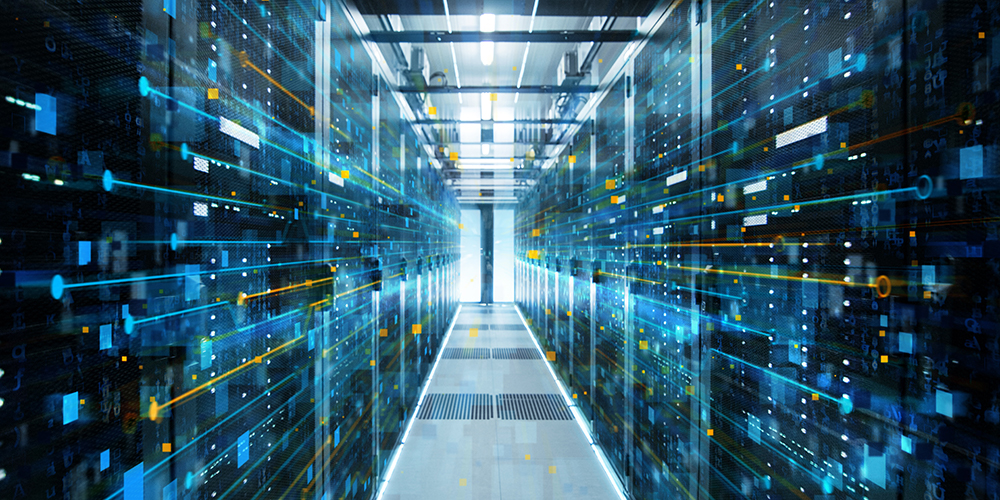
Mar 12, 2019 | SMB Technology, SMB Technology, SMB Technology, SMB Technology, Technology News
Cyber attacks and data breaches are regularly in the news, and often come with a loss or exposure of customers’ data and a loss of reputation to the business. Large, well-known businesses are often in the headlines; small to medium-size businesses, however, are just as much at risk. Knowledge of cybersecurity practices has yet to keep up with new threats. According to CompTIA’s 2018 Trends in Cybersecurity report, “Businesses with fewer than 100 employees are far more likely than their larger counterparts to feel that their IT security is simply adequate or unsatisfactory. Without a deep resource pool to lean on, smaller firms struggle to address new facets of IT security.” To learn more about protecting your data, read on. The Importance of Data Protection When a cyberattack occurs, customer data can be either lost or get in the hands of cybercriminals. As a result, customers can lose trust in your company to keep their data safe, data that is generated through online interactions with your company. How do you protect this data, your relationships with your customers, and your company’s bottom line? Your business may also be subject to regulatory compliance, such as following GDRP, HIPAA or PCI-DDS. As ever, it’s important to keep antivirus and anti-malware definitions up to date and to monitor your network. Backing up data in the Cloud is also an option to consider. But just as important is to develop a culture of cybersecurity in your organization. Develop a Culture of Cybersecurity Managers and CEOs can set the tone for a culture of cybersecurity by emphasizing the benefits of data protection. Not only...

Jul 3, 2018 | SMB Technology, SMB Technology, SMB Technology, SMB Technology, Technology News
With technology growing by leaps and bounds, and regulations assigned to protect the data generated by this technology, you need a business continuity and disaster recovery plan in place to determine how that data is collected, protected, analyzed and stored. Read on to find out how to protect your company from data loss and its consequences. Why You Should Care About Data Protecting Your Data According to COMPTIA, data protection will be a key trend in 2018 and beyond. Businesses will continue to generate large amounts of data; for some companies, regulations such as PCI, GDPR and HIPAA require protection of data and plans for business continuity in the face of potential data loss. Even without the need for compliance to regulations, businesses need access to their data even in the event of a natural disaster or a cyberattack. How Much Downtime Can you Afford? The average cost of downtime is $5,600 per minute. Not only that, but if your business is inaccessible during a flood, fire or other disaster, or simply a power outage, customers can lose confidence in the product or service you provide. Even more serious is the prospect of confidential data being lost or exposed. Having a plan in place can make the difference in whether your business stays in business. What to Include in Your Plan How much data can you afford to lose, and how long can you be without it? The best plan provides for storage and restoration of data during and after a disaster. How long can your systems be down before it affects profitability? How will you restore data that...

Jun 12, 2018 | SMB Technology, SMB Technology, SMB Technology, SMB Technology, Technology News
Data security needs to operate on more than one front. Not only does your network need to keep data secure, it needs to respond to threats both inside and outside the business. There are numerous protections, including current anti-malware and anti-virus software and operating system patches, to keep your network stable and secure. Read on to find out how operating system patch policy can be part of your data-protection plan. The Role of Operating System Patches Operating system patches are updates that help maintain the stability and security of your network. These updates come out on a regular basis and are needed to keep systems working. Typically, operating system patches are frequently available, although older operating systems past end of life may no longer have patches. Windows 7 and Windows server 2008 are next up for end of life in January of 2020. Some are vital to your mission-critical systems and must be accessed immediately, while others may pertain to less-vulnerable systems, and can be postponed. How a Service-Level Agreement Can Help Protect Your Data Instead of trying to choose which operating system patches need to be installed now, let your managed service provider take over. Draw up a service level agreement that specifies what services the managed service provider can take care of, including backup, data recovery, network security updates, and operating system patches. Keeping your systems—including operating system patches—current helps protect your data and prevent downtime. The MSP can detect and resolve many problems remotely, outside of business hours. Problems can be solved before they result in downtime for your business, and a reputable IT business can...

Oct 20, 2017 | SMB Technology, SMB Technology, SMB Technology, SMB Technology, Technology News
Many companies start their budget this time of year. As you are thinking about strategic investments, consider how you can leverage technology to improve customer service, make your employees more productive, and possibly save money. Here are a few considerations for next year’s technology budget. Network Upgrade Your network is the backbone of your technology infrastructure. Growing demand for high bandwidth activities including Communications and Collaboration, Call Center and Cloud Backup all require a bullet-proof network. What’s more, a number of advancements in Software Defined Wide Area Networking (SD-WAN) could save you a bundle. Consider having a network assessment or Telecom Expense Audit to see if you can save on your communications and networking costs next year. Fixed Priced IT If you haven’t deployed Managed Services to augment your technology infrastructure, you might consider how you could benefit from this model. By proactively monitoring and managing your infrastructure, your systems will work better and your cost of systems updates and support will be fixed. Cloud Computing The economic model of Cloud Computing allows companies to avoid unnecessary capital expense (CapEx) and use operating expense to subscribe to a range of Cloud Services. Software as a Service (SaaS) provides the latest version of your popular productivity applications, and Infrastructure as a Service (IaaS) offers a consumption model for scalable computing power. Data Protection Cyber threat, privacy data breach, human error and natural disasters can put your business at risk. Having a solid data protection plan helps businesses avoid the unnecessary downtime, fines, legal fees, and loss of reputation associated with data loss. There are many ways to invest in the...
Sep 12, 2017 | SMB Technology, Technology News
Recent Hurricanes Harvey and Irma, along with major earthquakes in Mexico, remind us how vulnerable we can be to disasters, and underscore the importance of data protection. As businesses depend on access to a range of systems–including call center, communications and collaboration application, customer management, and more–having a solid data protection plan can help you in a disaster recovery scenario. Now more than ever, a range of options exist to help maintain business continuity. Here are a few options to consider. Review Your Data Protection Plan Key to your data protection plan is identification of mission-critical systems. The most important systems should be redundant, with the ability for failover in the event of a disaster. Your data centers and failover options should be geographically dispersed and on different network backbones. This can minimize downtime and get you back up and running sooner. Having your data backup available in Cloud Storage can help you recover other important files and application data if you lose access to your on-premise systems. SD-WAN for Business Continuity Software-defined wide area networks (SD-WAN) can also provide you a highly reliable and redundant network. Having the ability to switch Wide Area Networks using SD-WAN as an alternative to more costly MPLS solutions can ensure connectivity during a natural disaster. What’s more, Software-Defined Wide Area Networking can save you money in the long run by giving you the flexibility of a multi-carrier solution. Software as a Service for Disaster Recovery More businesses are turning to the Cloud for a range of applications–hosted email, Voice over IP (VoIP), Call Center, and others–to keep communications flowing during a...





